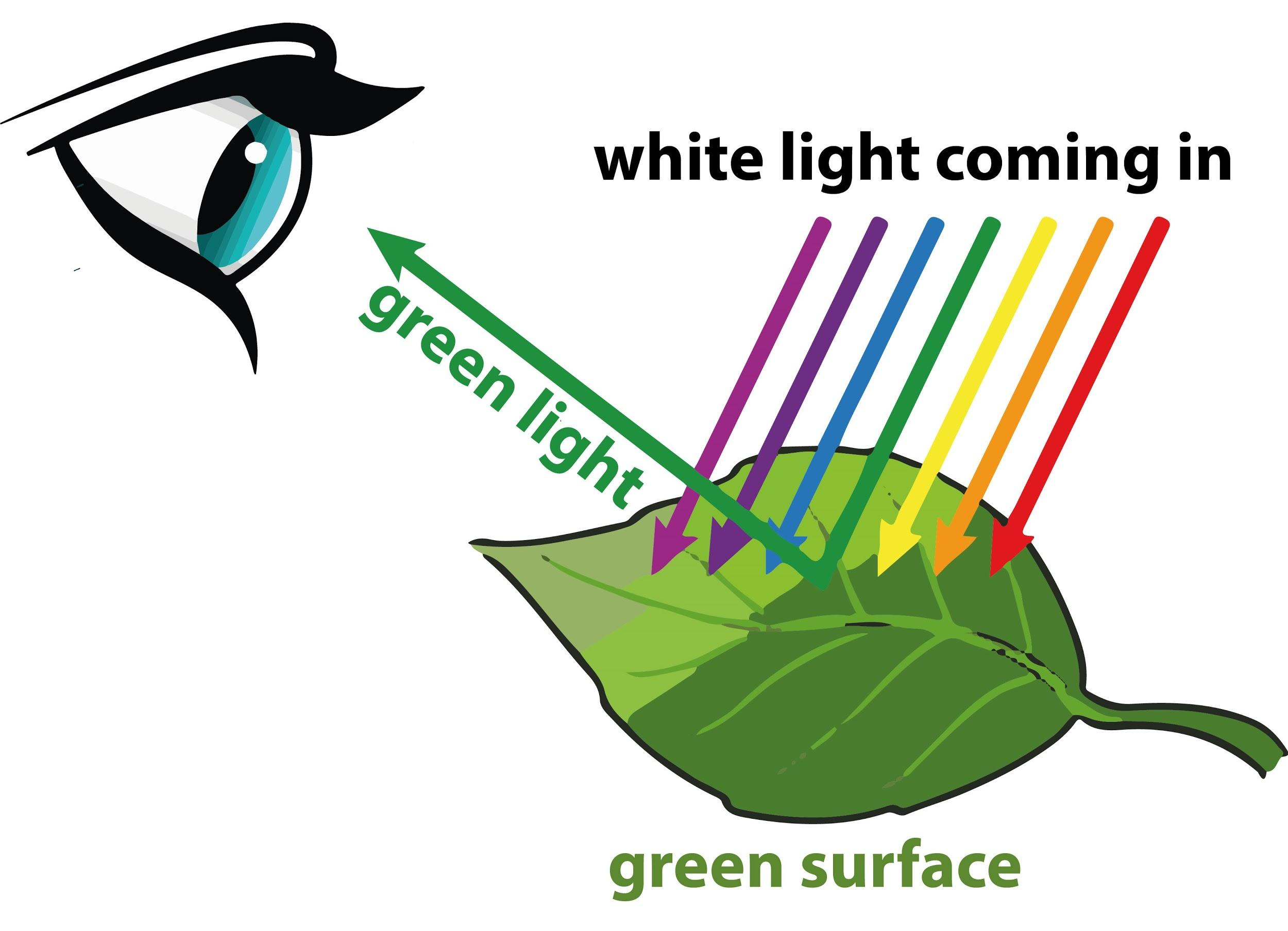
Plants are green in colour because
(a) They absorb green light only.
(b) They reflect green light.
(c) They absorb green light but reflect all other lights.
(d) None of these.
Answer
573.9k+ views
Hint: Different objects appear of different colours due to absorption or reflection of different wavelengths of light. Such as apples appear red because apples take up all other colours but not red.
Complete answer:
Light is made up of many colours. These colours can be seen when light is broken up. When light falls on the plant some amount of wavelength is absorbed by the chlorophyll and accessory pigments. The colour of the pigment comes from the wavelength of the light they reflect. The green leaves absorb all wavelength except the light of 550nm wavelength, i.e green colour in the visible range. So, the green wavelength is reflected by the plant. The reflected wave when falling into our eyes then our eyes which consist of light- sensitive photoreceptors identifies the colour and interprets it to the brain.

So, the correct answer is, ‘they reflect green light.’
Additional Information:
- There are seven colours of light in a spectrum: violet, purple, blue, green, yellow, orange, red and these colours are always seen in the same order.
- The ability of a human being to identify and distinguish different colours by light- sensitive receptors present in eyes that are cones and rods.
Note:
- The only thing that our eyes see is light. So, when the light bounces back on the object we can understand the colour and texture and the colour of an object depends on the colour of light the object reflects.
- The black colour objects absorb all the colour and no light is reflected. Thus, appears to be black in colour.
Complete answer:
Light is made up of many colours. These colours can be seen when light is broken up. When light falls on the plant some amount of wavelength is absorbed by the chlorophyll and accessory pigments. The colour of the pigment comes from the wavelength of the light they reflect. The green leaves absorb all wavelength except the light of 550nm wavelength, i.e green colour in the visible range. So, the green wavelength is reflected by the plant. The reflected wave when falling into our eyes then our eyes which consist of light- sensitive photoreceptors identifies the colour and interprets it to the brain.

So, the correct answer is, ‘they reflect green light.’
Additional Information:
- There are seven colours of light in a spectrum: violet, purple, blue, green, yellow, orange, red and these colours are always seen in the same order.
- The ability of a human being to identify and distinguish different colours by light- sensitive receptors present in eyes that are cones and rods.
Note:
- The only thing that our eyes see is light. So, when the light bounces back on the object we can understand the colour and texture and the colour of an object depends on the colour of light the object reflects.
- The black colour objects absorb all the colour and no light is reflected. Thus, appears to be black in colour.
Recently Updated Pages
Master Class 12 Business Studies: Engaging Questions & Answers for Success

Master Class 12 Economics: Engaging Questions & Answers for Success

Master Class 12 English: Engaging Questions & Answers for Success

Master Class 12 Maths: Engaging Questions & Answers for Success

Master Class 12 Social Science: Engaging Questions & Answers for Success

Master Class 12 Chemistry: Engaging Questions & Answers for Success

Trending doubts
What is meant by exothermic and endothermic reactions class 11 chemistry CBSE

Which animal has three hearts class 11 biology CBSE

10 examples of friction in our daily life

One Metric ton is equal to kg A 10000 B 1000 C 100 class 11 physics CBSE

1 Quintal is equal to a 110 kg b 10 kg c 100kg d 1000 class 11 physics CBSE

Difference Between Prokaryotic Cells and Eukaryotic Cells




